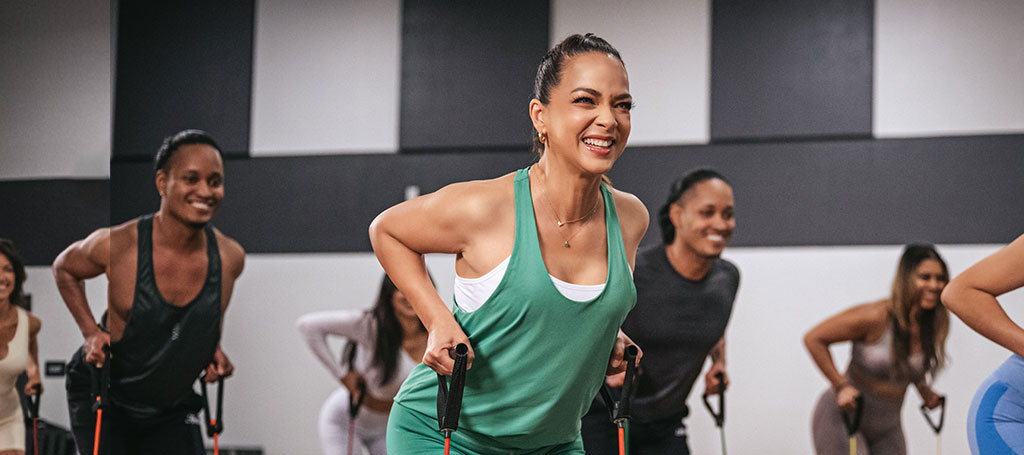Strength training is a key component of overall fitness and health. It helps build muscle, increase bone density, boost metabolism, improve posture, and reduce the risk of injuries. Despite these benefits, many beginners feel intimidated by the gym or unsure where to start. This comprehensive guide will provide you with everything you need to know to embark on your strength training journey safely and effectively.
What is Strength Training?
Strength training, also known as weightlifting or resistance training, involves using resistance to contract your muscles and build strength. This resistance can come from your own body weight, free weights like dumbbells and barbells, resistance bands, or weight machines.
Benefits of Strength Training for Getting Stronger
Strength training offers numerous benefits, especially for beginners:
- Increased Muscle Mass: As you lift weights, you create microscopic tears in your muscle fibers. Your body repairs these tears, making your muscles bigger and stronger.
- Enhanced Metabolism: Muscle tissue burns more calories at rest than fat tissue. By building muscle, you boost your metabolism and make it easier to maintain a healthy weight.
- Improved Bone Health: Strength training stimulates bone growth and increases bone density, reducing the risk of osteoporosis and fractures.
- Better Posture and Balance: Stronger muscles help support your spine and improve your posture, reducing back pain and improving balance.
- Injury Prevention: Strong muscles protect your joints from injury during everyday activities and sports.
- Increased Confidence: Achieving your fitness goals and feeling stronger can boost your self-esteem and confidence.
Getting Started Getting Stronger
Before you begin, it’s crucial to prepare and plan your strength training routine. Here are some essential steps to get started:
- Consult Your Doctor: If you have any underlying health conditions or concerns, it’s advisable to consult your doctor before starting a new exercise1 program.
- Set Realistic Goals: Start with achievable goals, such as training twice a week or learning proper form for a few basic exercises. As you progress, you can gradually increase the frequency, intensity, and complexity of your workouts.
- Warm-up: Before each workout, warm up your muscles with 5-10 minutes of light cardio, such as jogging or jumping jacks, followed by dynamic stretches like arm circles and leg swings.
- Start with Bodyweight Exercises: Bodyweight exercises are an excellent way to build a foundation of strength without any equipment. Some effective bodyweight exercises for beginners include squats, lunges, push-ups, planks, and glute bridges.
- Learn Proper Form: Proper form is crucial for preventing injuries and maximizing results. Watch videos, consult a trainer, or use mirrors to ensure you’re performing exercises correctly.
- Focus on Compound Exercises: Compound exercises work multiple muscle groups simultaneously, making them efficient and effective for beginners. Examples include squats, deadlifts, lunges, and overhead presses.
- Listen to Your Body: Pay attention to your body’s signals and rest when needed. Don’t push yourself too hard, especially when starting.
- Cool Down: After each workout, cool down with 5-10 minutes of static stretches, holding each stretch for 30 seconds.
Basic Strength Training Exercises for Beginners
Here are some fundamental strength training exercises suitable for beginners:
- Squats: Stand with your feet shoulder-width apart, toes pointing slightly outward. Lower your hips as if sitting back in a chair, keeping your back straight and chest up.
- Lunges: Step forward with one leg, bending both knees to 90 degrees. Keep your front knee aligned with your ankle and your back knee off the ground.
- Push-ups: Start in a plank position with your hands shoulder-width apart. Lower your body until your chest touches the floor, then push back up.2
- Plank: Hold a push-up position with your forearms on the ground, maintaining a straight line from head to heels.
- Glute Bridges: Lie on your back with your knees bent and feet flat on the floor. Raise your hips off the ground, squeezing your glutes at the top.
Safety Tips for Strength Training Beginners
- Start Slowly: Don’t try to lift heavy weights right away. Begin with lighter weights or bodyweight exercises and gradually increase the resistance as you get stronger.
- Use Proper Form: Focus on maintaining proper form throughout each exercise to prevent injuries.
- Breathe Correctly: Exhale during the exertion phase of the exercise and inhale during the relaxation phase.
- Rest Between Sets: Allow your muscles to rest for 30-60 seconds between sets.
- Listen to Your Body: If you experience pain, stop the exercise and rest. Don’t push through pain.
- Stay Hydrated: Drink plenty of water before, during, and after your workout.
- Fuel Your Body: Eat a balanced diet with adequate protein to support muscle growth and repair.
Sample Beginner Strength Training Workout
This sample workout can be performed 2-3 times per week, with rest days in between.
Warm-up:
- 5 minutes of light cardio
- Dynamic stretches
Workout:
- Squats: 3 sets of 10-12 repetitions
- Lunges: 3 sets of 10-12 repetitions per leg
- Push-ups: 3 sets of as many repetitions as possible
- Plank: 3 sets,3 holding for 30-60 seconds
- Glute Bridges: 3 sets of 10-12 repetitions
Cool-down:
- 5-10 minutes of static stretches
Progressing Your Strength Training
As you get stronger, you can progress your strength training by:
- Increasing Weight or Resistance: Gradually increase the weight you lift or the resistance of the bands you use.
- Adding Sets and Repetitions: Increase the number of sets and repetitions you perform for each exercise.
- Trying New Exercises: Incorporate new exercises to challenge your muscles and prevent plateaus.
- Varying Your Workouts: Change your workout routine every few weeks to keep your muscles challenged and prevent boredom.
Ready to take your fitness journey to the next level? Sign up for a three-day pass to our state-of-the-art gym and experience the benefits of strength training firsthand. Our expert trainers are available to guide you and help you achieve your fitness goals.
Click here to register for your free three-day pass!
Common Questions About Getting Stronger for Beginners
Q: How often should I strength train as a beginner?
A: Aim for 2-3 strength training sessions per week, with rest days in between to allow your muscles to recover.
Q: What should I eat before and after strength training?
A: Before your workout, have a light snack or meal with carbohydrates and protein for energy. After your workout, consume a meal with protein and carbohydrates to aid muscle recovery and growth.
Q: Can I do strength training at home?
A: Absolutely! You can effectively strength train at home using your body weight, resistance bands, or affordable equipment like dumbbells.
Q: How long will it take to see results from strength training?
A: You may start to notice improvements in your strength and endurance within a few weeks. Visible changes in muscle mass may take several weeks or months, depending on your consistency and intensity.
Q: Is strength training safe for everyone?
A: While strength training is generally safe for most people, it’s essential to consult your doctor if you have any underlying health conditions or concerns.
Don’t wait any longer to start your strength training journey! Sign up for a three-day pass to our gym and discover the transformative power of strength training.
Click here to claim your free three-day pass!
This comprehensive guide provides a solid foundation for beginners embarking on their strength training journey. Remember to start slowly, focus on proper form, and listen to your body. With consistency and dedication, you’ll reap the numerous benefits of strength training and achieve your fitness goals.










